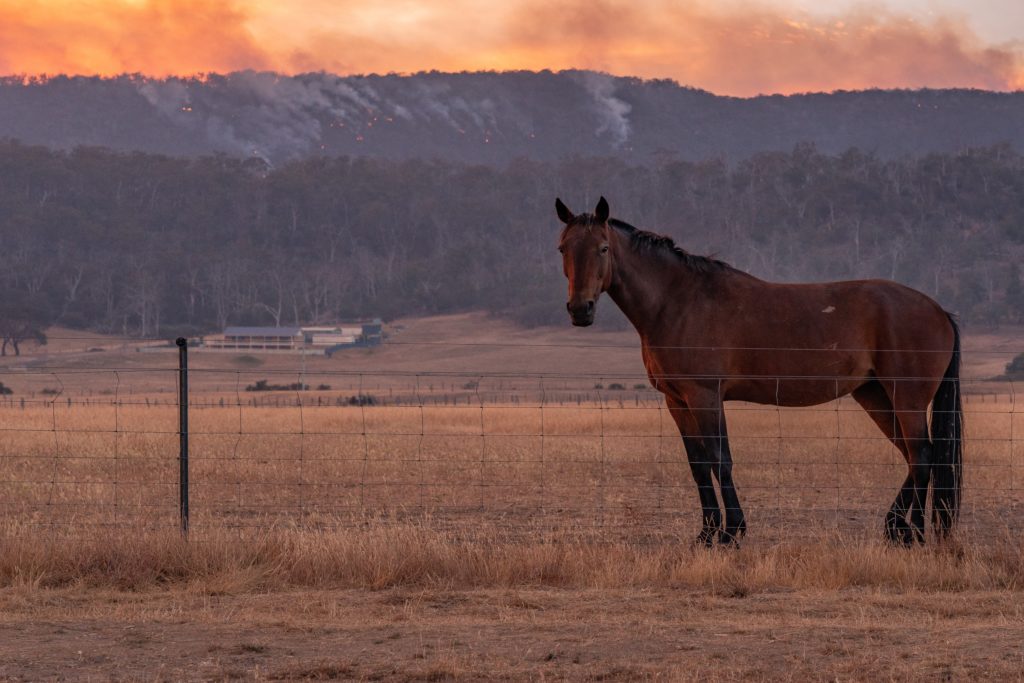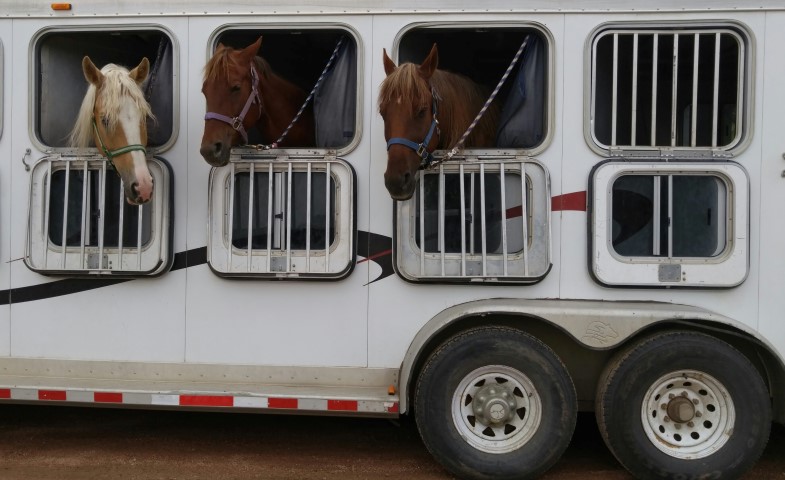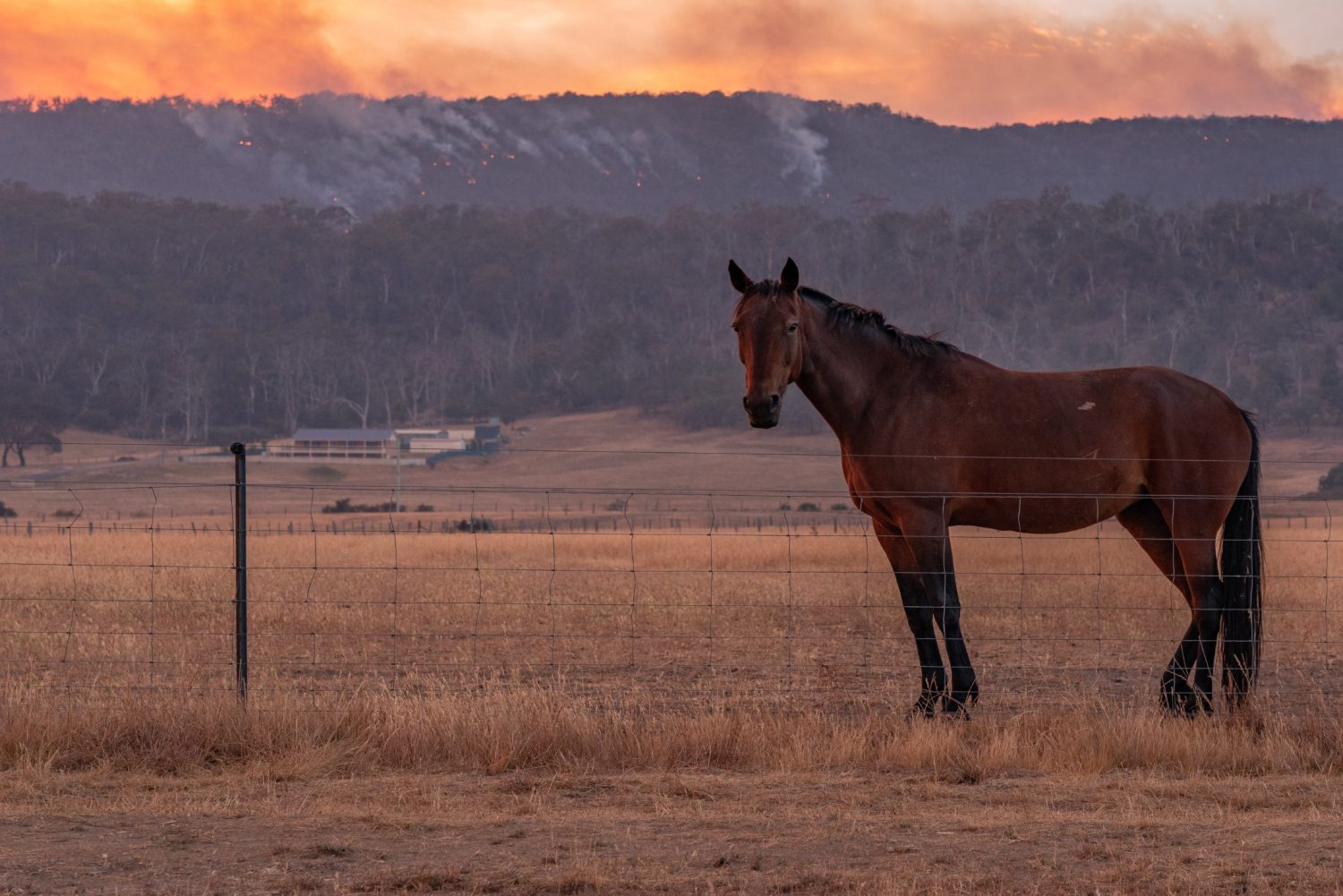With wildfire season longer, more wide spread, and more extreme each year, thousands of horse owners will face the unthinkable – the loss of their home, all of their belongings, and in many cases, their pets and horses. While there is little we can do to change the meteorological changes that have put 40% of California in “exceptional drought”, there are several things we can do before an emergency evacuation to help protect our horses.
Step 1 – Understand your Risk
Over the past few years, wild fires have affected areas never threatened before, and that trend is likely to continue. Even if you don’t think you’re in a wildfire area, these disaster preparedness tips can help you prepare for hurricanes, flooding, and other natural disasters.
The first step to being prepared is to understand your risk. Knowing what natural disasters are most likely to affect your area and what time of year they’re likely to occur can help you form a preparedness plan.

Step 2 – Have a Plan
The three biggest factors you’ll need to take into account when creating your plan are: where to go, when to go, and how to get there.
- Where to go. This will vary greatly depending on your demographics and types of disasters you’re likely to experience. If you live in a box canyon in a wildfire-prone area, you’ll need to factor in things like how many other people live in the canyon, how long it would take to get out of the canyon, and which direction a fire is most likely to come from. Many boarding barns and event facilities offer emergency stabling, but if a large area is affected by the disaster, you may find many facilities full Having more than one option can literally be a matter of life and death.
- When to go. It’s better to head out 5 days early than 5 minutes late. Not all situations will give you a long time to prepare, so stay informed of impending risks, and get out as soon as you’re able.
- How to get there. Do you have a truck and trailer? Do your horse’s load? Do you have a friend or neighbor who can haul your horses? Do you have a 2-horse trailer and more than 2 horses? The time to make your arrangements is now, not when you can see the flames advancing toward your barn.

Step 3 – Stock emergency supplies
Just as you should keep a “go bag” for your human family with medications, important papers, food, water, etc., you should have supplies organized especially during wildfire season for your horses.
Feed, hay, water, any meds, extra halters and lead ropes, and paperwork, should all be ready to go. Speak with your vet about accessing your horses health records online. Some facilities will require proof of vaccination before you’ll be allowed on the property. Another alternative is to photograph all of your horse’s records and store the pictures on your cell phone.
You should already have well-stocked first aid kits in your trailer, both horse and human, but if you don’t, make sure the ones at the barn are kept up to date and ready to grab.

Step 4 – Microchip your Horse
Microchipping is a method of implanting a small chip, about the size of a grain of rice, in a horse’s neck. It’s been used for quite a while for various breed registries and competition federations, but it’s also one of the best ways to reconnect with your horse if you’ve been separated during a natural disaster.
Most equine vets can microchip horses. The process is quick and inexpensive, and having your horse microchipped means if he ends up in a holding area, rescue personnel will be able to identify him more easily. Microchipping will also increase the likelihood of your horse being correctly identified in case of theft. Be sure you have a record of his microchip information on your phone or in your emergency kit.
Step 5 – Have a Worst-Case Scenario Plan
If you’re forced to evacuate without your horses, there are some things you can do that will help improve his chances of survival.
- Make sure he has access to water. Leave a trough or some buckets to last at least a couple of days.
- Make him identifiable. If your horse isn’t microchipped, you can use spray paint to put contact information right on his body. Remember that you may not have cell phone service during a disaster, so putting the phone number of a friend or relative who lives outside the area might be wise. Just make sure you speak with your friend ahead of time so they know what to do if they receive a call about your horse.
- Give him his best chance. Horses are often safer during a natural disaster if they’re turned out rather than left in a barn. While there’s no way to completely eliminate risk in these situations, he can at least try to find his way to safer ground.
While no one wants to think about the unthinkable, making sure you and your horses are prepared to deal with a situation ahead of time can eliminate a lot of heart ache. Do whatever you can ahead of time to ensure both you and your horse survive if a natural disaster strikes or wildfire season. Make your plan now – before it’s too late.
We are fortunate In Yavapai County to have an all-volunteer not-for-profit called Equine Emergency Evacuation of Yavapai County (“EEE”), an organization that has been created to assist equine owners in the event of wildfire and other emergency situations. You can read their guest blog here.
Jody Miller is a professional photographer specializing in Horse Photography, Equine Photography, and Equestrian photography. Her work can be viewed online here in her gallery section, and she is also featured at these Arizona Galleries: Van Gogh’s Ear Gallery on Whiskey Row in Prescott, AZ and Coops Coffee House at Talking Rock Ranch. Arizona Downs OTB Room offers few of my Canvas work and several images are also available at The Phippen Western Art Museum
